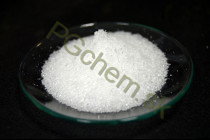Citric acid, monohydrate - ( 5 kg )
| Availability: | In stock | |
| Quantity: | x 1 ks | |
| Price with VAT: | 16,07 € ( 13,39 € without VAT ) | |
Product name
Citric acid , E330 , citric acid monohydrateInformation
It is a weak acid with the carboxyl group. It occurs naturally in citrus fruits, particularly lemons, limes, grapefruit, oranges, and to a lesser extent in other fruits and vegetablesUsage
- Home descale and it does not smell like vinegar and also is suitable to polish windows, green washingIt prevents the growth of bacteria, yeasts and molds, so it is used as a preservative. The fats and oils to prevent rancidity and undesirable changes in color and acts as andioxidant here.
Citric acid is also found in cosmetics, pharmaceuticals, and chemical manufacturing.
Specification
Chemical formula: (HOOCCH2)2C(OH)COOHHS Code: 2918 14 00
EC Number (EINECS): 201-069-1
Molar mass: 210.14 g/mol
CAS No.: 5949-29-1
Storage class: 10 - 13 Other liquids and solids
WGK: WGK 1 slightly hazardous to water Ignition temperature: 540°C (anhydrous substance)
Solubility in water: 1630 g/l (20°C)
Melting point / Melting range: 135 to 152°C
Molar mass: 210.14 g/mol
Density: 1.54 g/cm3 (20°C)
Sipná density: 800 - 1000 kg/m3
PH-value: (50 g/l, H2O, 25°C)
Boiling point: 200°C (1013 hPa) (decomposition)
Vapour pressure <- 0.1 hPa (20°C)
Toxicological information
Oral LD50 (rat) 3000 mg / kgStorage
Store in cool, dry place in well-closed containers.
UPOZORNENIE:

Signal word: Warning
P305 + P351 + P338: After eye contact: A few minutes Rinse cautiously with water. If you wear contact lenses, if possible, remove them. Continue rinsing.
Hazard Statement (s) H319: Causes severe eye irritation.
Precautionary plenty of water. If you wear contact lenses, if possible, remove them. Continue rinsing.


